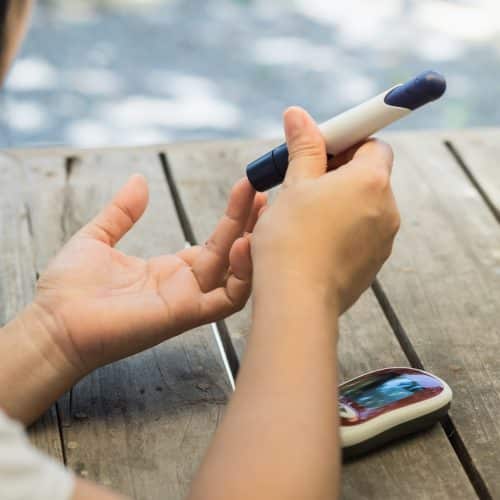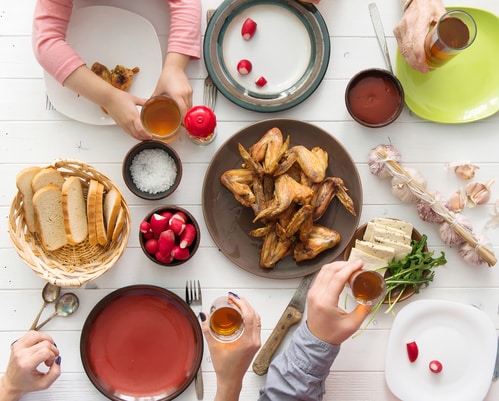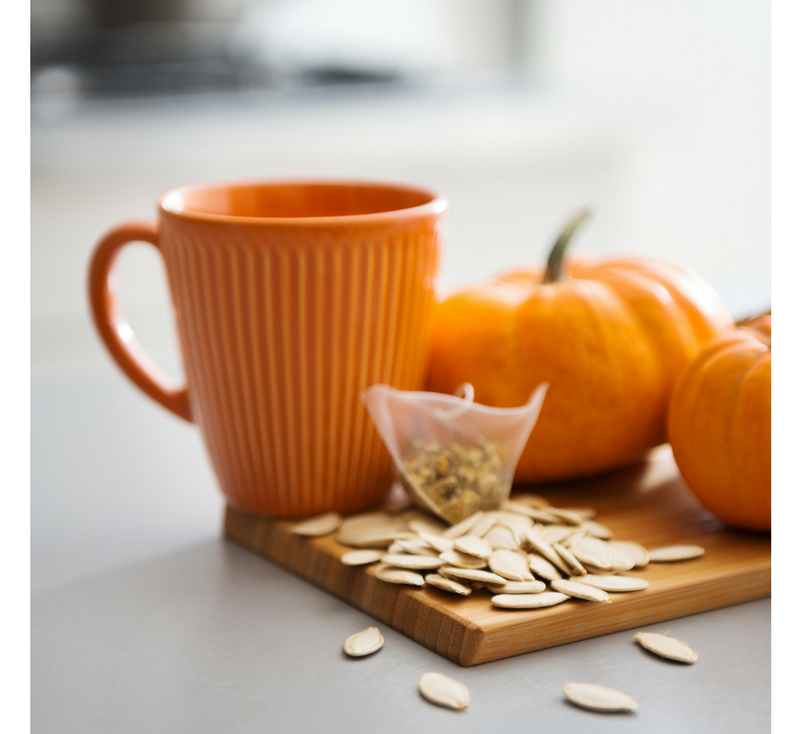By: Rosanne Rust, MS, RDN, LDN —
Diabetes affects approximately 30.3 million Americans, or 9.4% of the population, according to 2015 data from the American Diabetes Association. Of that 30 million, approximately 1.25 million American children and adults have type 1 diabetes, and another one million have pre-diabetes. It’s estimated that 1 million Americans are diagnosed with diabetes every year.
November is recognized in the United States Diabetes Month. November 14th is recognized around the globe as World Diabetes Day. And these statistics most certainly deserve attention when considering both the prevention and treatment of Type 1 and Type 2 diabetes. Read on to learn more about diabetes, and how carb counting can be used as a tool.
Diabetes Terms at a Glance
Pre-DiabetesAlso called impaired glucose tolerance, pre-diabetes is diagnosed when blood glucose levels are higher than optimal but not high enough to be diabetes. People with pre-diabetes are at higher risk for developing type 2 diabetes, and for heart disease and stroke.Type 1 DiabetesType 1 diabetes is usually, but not always, diagnosed in childhood. It is diagnosed when blood glucose and hemoglobin A1C (average blood sugar over the past 2 to 3 months) results are above normal range. In addition to high blood glucose levels in type 1 diabetes, there is also a lack of insulin produced in the body. Type 1 diabetes requires injecting insulin (using syringes, pens, or an insulin pump) and measuring blood sugar levels (using a glucometer or a wearable device called a Continuous Glucose Monitor (CGM)).Type 2 DiabetesType 2 diabetes occurs when blood sugars are consistently high, due to either insulin resistance or poor insulin response in the body. Type 2 diabetes typically presented in middle aged or older adults, but we are now seeing it diagnosed more in younger people. It sometimes requires insulin, but often is managed with oral medication, diet and lifestyle interventions. Measuring blood sugar levels is also essential for managing Type 2 Diabetes, although it is typically done so less frequently compared to Type 1.
Risk Factors
Risk factors for Type 2 diabetes include family history, being overweight, having high blood pressure, age (being over 45), and metabolic syndrome (overweight, low HDL, high triglycerides). A strong family history of diabetes increases risk as well. The good news is that both types of diabetes can be treated and controlled with lifestyle choices and medication.
Education and Treatment
Certified Diabetes Educators (CDE) are trained to help people with diabetes lead healthy lives by creating a blood sugar management plan and helping them stay on track with it. Registered Nurses and Registered Dietitians often pursue this credential. CDEs have comprehensive knowledge about diabetes prevention, pre-diabetes, diabetes, and diabetes management.
Once diagnosed, it’s recommended that patients meet with a dietitian and CDE who will review the physiology of the disease and its potential complications. They will also educate the patient about lifestyle change, diet, and blood glucose monitoring.
How Many Carbs?
Carbohydrates (carbs) have been blamed for weight gain and diabetes over the past few years, creating confusion over this important nutrient. In many cases, some individuals are avoiding carbohydrates for no reason. Carbohydrates provide energy and many carbohydrate foods deliver important vitamins, minerals, and fiber. In addition – these foods add flavor, texture, and enjoyment to the diet.
How many carbohydrates do people need? This depends on multiple factors and should be prescribed by the CDE. A 140 pound woman requires fewer carbs than a 200 pound man. Carbohydrate needs are calculated based on total energy needs required to maintain a healthy body weight. Depending on the person, their medical and diet history, and their weight and activity level, the carbohydrate prescription may be 40-50% of total recommended calories. For someone requiring 1,800 calories, this would be about 200-225 grams a day. For someone needing 2,200 calories, carbohydrate limits would be 250-275 grams per day. Ideally, these carbs are spaced out through the day (at about 15-65 grams per snack or meal), and also planned to match activity and glucose tolerance.
Carbohydrate Counting
Carbohydrate counting (or carb counting) is a dietary strategy to help people with diabetes track their carbohydrate intake to keep blood sugar levels optimal. It involves tracking the grams of carbohydrates consumed through meals and snacks through the day. A registered dietitian (RDN) can determine how many carbohydrates are needed in the diet depending on calorie needs and activity levels. An RDN or CDE will also help patients plan the amounts needed at each meal or snack.
Carbohydrates are one of three macronutrients found in foods and beverages. The other two are protein and fat. Carbohydrates include sugars (simple carbs) and starches (complex carbs). Carbohydrates are found in many foods including breads, cereal, grains, pasta, fruit, vegetables, milk, yogurt, and of course sweets (candy, sugar-sweetened beverages, baked goods and desserts). Foods such as whole grains, fresh fruits and vegetables are considered complex carbohydrates and contain more nutrients, but since carbohydrates increase blood sugar more rapidly than foods high in protein or and fat, it’s important for those with diabetes to keep track of all of them. Unless a patient is experiencing hypoglycemia, it is usually recommended that simple carbohydrates are avoided for the most part due to their higher glycemic effect.
Managing the amount of carbohydrates consumed at every meal results in better blood sugar management. Many types of foods containing carbohydrate can be included in the meal plan (such as special occasion foods). A unit (or carb-counting serving size) of carbohydrate is generally considered to be 15 grams, and a meal plan may limit carbs to 30-45 grams per meal, or 15-30 grams per snack.
How do Sweeteners Fit?
People with diabetes can still enjoy some foods containing sugar, but they have to be carefully planned into the diet. Overall, high sugar foods and beverages should be strictly limited (this is especially true with sugary drinks, since liquid sugar raises blood sugar levels rapidly). Low- and no-calorie sweeteners (LNCS) can help add sweetness to the diet without the unwanted glycemic effects of caloric sweeteners. For instance, aspartame has no effect on blood sugar, nor on body weight.
Substituting non-caloric sweeteners for caloric ones can also make the diet plan more enjoyable. These include diet soda in place of regular, lemonade or other drinks sweetened with aspartame or another LNCS, light yogurt, sugar free frozen treats, or sugar free pudding. LNCS can also be used to sweeten tea or coffee.
Since LNCS don’t add to the total carbohydrate content of the food or beverage, they can be a very helpful tool for people with diabetes. A newly diagnosed patient who previously enjoyed drinking regular soda or sweet tea will be delighted to hear they can substitute a diet soda or a tea sweetened with a LNCS that can be integrated into blood sugar management programs.
Summary
Carbohydrate management is a key component of blood glucose management, and, therefore, it’s important that all carbohydrates are accounted for in a patient’s meal plan. Be sure to refer newly diagnosed patients to a registered dietitian and CDE so your patient will have a blood sugar and meal plan management strategy. In addition, continue to encourage patients to touch base with their educator whenever they are struggling with their blood sugar levels. Keep in mind, achieving a desirable weight and including daily physical activity also play key roles in diabetes management. The more enjoyable and feasible a diet plan is, the more likely your patients will be able to adopt and adhere to it.

Rosanne Rust MS, RDN, LDN is a registered, licensed dietitian-nutritionist with over 25 years experience. Rosanne is a paid contributor to Allulose.org. As a Nutrition Communications Consultant she delivers clear messages helping you understand the science of nutrition so you can enjoy eating for better health. Rosanne is the co-author of several books, including DASH Diet For Dummies® and the The Glycemic Index Cookbook For Dummies®. A wife, and mother of 3 boys, she practices what she preaches, enjoying regular exercise, good food and festive entertaining. Follow her on Twitter @RustNutrition.













 Jessica Levinson, MS, RDN, CDN is a registered dietitian nutritionist and culinary nutrition expert. She has extensive experience as a recipe developer, writer, editor, and speaker. She is the co-author of We Can Cook: Introduce Your Child to the Joy of Cooking with 75 Simple Recipes and Activities (Barron’s, 2011), past columnist for the Culinary Corner column in Today’s Dietitian Magazine, and maintains a popular blog at
Jessica Levinson, MS, RDN, CDN is a registered dietitian nutritionist and culinary nutrition expert. She has extensive experience as a recipe developer, writer, editor, and speaker. She is the co-author of We Can Cook: Introduce Your Child to the Joy of Cooking with 75 Simple Recipes and Activities (Barron’s, 2011), past columnist for the Culinary Corner column in Today’s Dietitian Magazine, and maintains a popular blog at 
 Jill Weisenberger, MS, RDN, CDE, CHWC, FAND has worked as both a nutrition counselor and a diabetes educator in the hospital and research settings, and now in private practice in Newport News, VA. Jill is the author of
Jill Weisenberger, MS, RDN, CDE, CHWC, FAND has worked as both a nutrition counselor and a diabetes educator in the hospital and research settings, and now in private practice in Newport News, VA. Jill is the author of 
 Carolyn Reynaud, MS, RD, LD is a licensed registered dietitian and a paid contributor to SteviaBenefits.org. She received her BS in nutrition from Michigan State University and her Masters and Certificate in Public Health from Georgia State University. She has experience working in several avenues of health care including corporate wellness, clinical disease management, research, and health promotion. She has been working as a health coach specialist for close to 6 years, where she counsels patients on preventative healthcare and helps them meet their health goals. Follow her on Twitter
Carolyn Reynaud, MS, RD, LD is a licensed registered dietitian and a paid contributor to SteviaBenefits.org. She received her BS in nutrition from Michigan State University and her Masters and Certificate in Public Health from Georgia State University. She has experience working in several avenues of health care including corporate wellness, clinical disease management, research, and health promotion. She has been working as a health coach specialist for close to 6 years, where she counsels patients on preventative healthcare and helps them meet their health goals. Follow her on Twitter